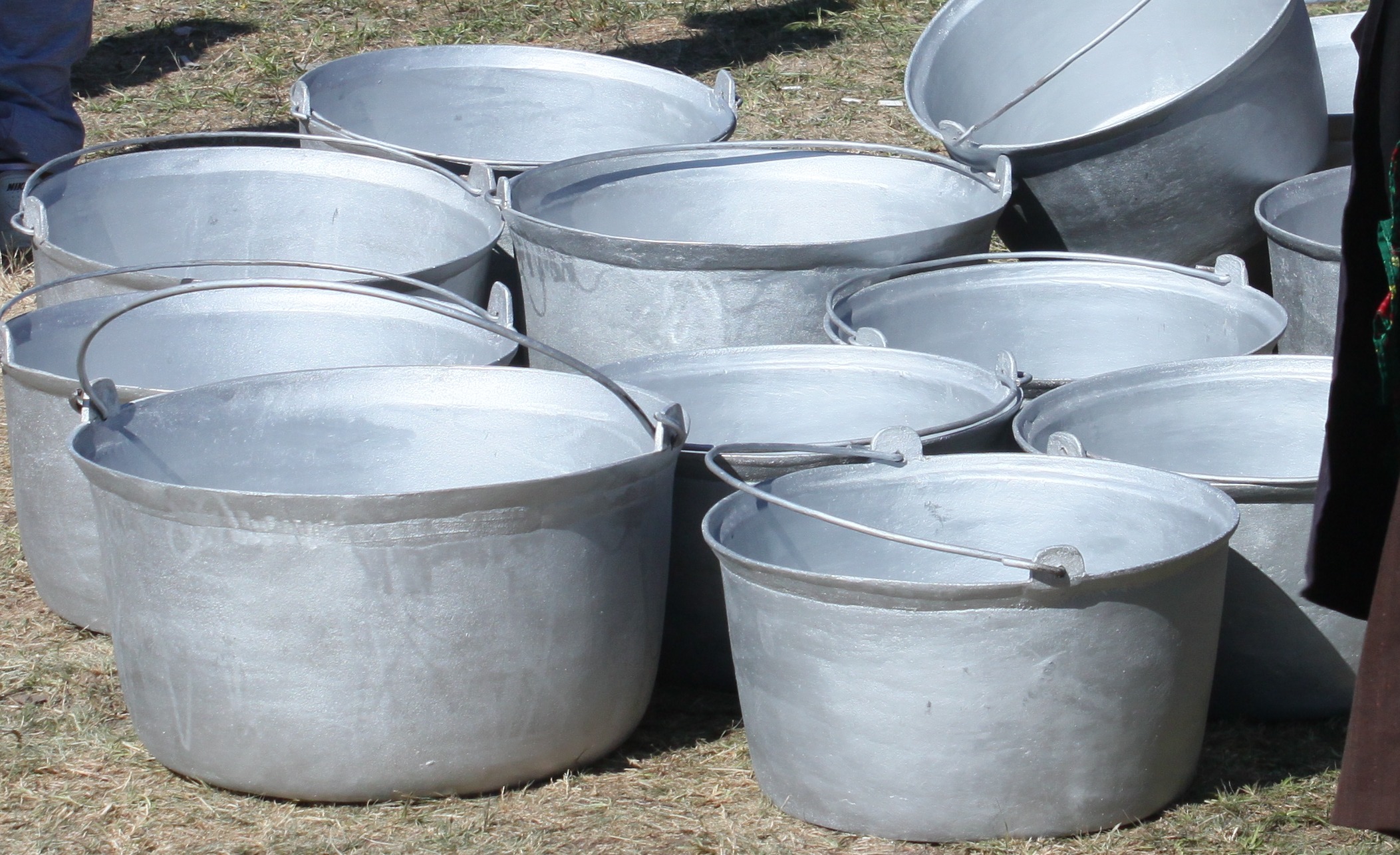Aluminum cookware sales accounted for almost 60% of all cookware sold in the USA in 2015, according to the Cookware Manufacturers Association. As a result, aluminum cookware is a large part of cooking in the US. In addition, aluminum is an excellent conductor of heat, making it a good choice for cookware. Compared to stainless steel, aluminum heats 16 times faster, cooks evenly, and is more responsive.
Forged, die-cast or stamped aluminum pans are available. The manufacturing process and material quality are both critical to price and quality—the lower the price, the lower the value of the lifespan and performance for stamped ones. Die-casted ones are harder and more resistant than forged ones, but the best ones are developed.
What Is the Difference Between Cast Aluminum and Forged Aluminum?
Cast Aluminum
Molten metal, and the resultant casting, can form complex shapes that are constrained only by the design of the mold and the metal flow and solidification dynamics. This helps to cast by allowing internal chambers and external features to be incorporated into finished products and reducing the number of subsequent metal removal operations required to finish the product.
Although metal may be in a liquid state, many impurities can enter and contaminate the liquid. During the fluid stage of casting, if alloy segregation occurs, inconsistent material properties can be observed throughout the casting. Tears and cracks form when different sections of the metal solidify at different rates.
Forged Aluminum
While forging does come with the added benefit of adding deformation energy to the metallurgy, forging has the downside of causing deformations to occur in the shape being forged. Originally cast ingots of aluminum are shaped and reshaped by mechanically and thermomechanically deforming them. Anything used to mix or contain the additional elements (any inclusions or alloy concentrations) is dispersed. Any open spaces (voids) are eliminated.
Increased durability and toughness are created when forging energy drives the recrystallization of the microstructure. As a result, the developed product has better properties than cost-related challenges. Still, cost becomes an issue when safety, reliability, and component failure are the most significant challenges.
Is Forged Aluminum Stronger Than Cast?
The casting process involves melting down the metal and pouring or forcing it into a mold made to shape the finished product. Forging in solid forms, such as hammering or pressing, induces curvature to form the required shape. Cost and service requirements can influence which process is used to create a component.
Cost
Although the costs of machining aluminum forgings are generally lower than for casting, the price of the former remains about the same. Cost becomes a significant factor when there are numerous fabrication options for specific applications.
Aluminum forging has a higher production rate than that of casting. As a result, many forgings are used in highly stressed applications instead of castings, as they are less expensive.
Strength
Aluminum forgings display mechanical properties under heat treatment that give them a higher strength to weight ratio than castings. It is free of porosity. Aluminum forgings, too, benefit from being subjected to heat treatment. Aluminum forging provides a greater level of strength, making it possible to get better overall results and more significant life spans.
Surface Finish
When aluminum forging is finished, a variety of surface treatments can be used. The surface finish of casting is unattractive to the naked eye and lacks a smooth feel. Aluminum forging, however, allows for smooth or serrated surfaces. Most anti-corrosion traits with no surface finish are found in 6061 aluminum forging alloys.
Flexibility
Aluminum parts can be formed in various ways, but not all forms of aluminum components are forged. Forging gives off unexpectedly varied shapes because it is accomplished with a die tooling designer, not because of any forging process itself.
Early on in the design process, 3D modeling and drawings have expanded the design’s flexibility greatly. As a result, when designing new features for clients, aluminum forged components are flexible because they are not restricted by the body dimensions of the element.
Is Forged Aluminum Cookware Good?
Non-cast aluminum pans and cooking utensils are pressed or forged. A metal plate is machined to achieve this result, then punched out and pressed into shape or cold forged. The practice of pressing can be utilized on cheaper products that have wall thicknesses ranging from 2 to 3 millimeters.
Aluminum pots are manufactured using a method that applies a much more tremendous amount of force on the aluminum than during pressing. As a result, forged aluminum cookware is more durable than pressed aluminum cookware. In addition, other types of complex structures, such as a reinforced rim, are achievable during forging, especially for aluminum casting.
Is Forged Aluminum Safe to Cook with?
Pots and pans made from aluminum are known as aluminum cookware. Pans can be made of many different materials and coatings. In addition, they can be anodized or nonstick coated, which means the pan will not react with acidic foods. In addition, aluminum is a great heat conductor, so your pan will heat up quickly and cook food evenly.
Aluminum- and lead-tainted food is possible when aluminum cookware is used without coating or anodizing. When it comes to acidic foods, they increase leaching. This type of leaching is considered a contribution to your overall metal intake but is only a small amount and well under the safe temperature.
The type of aluminum cookware, made by forcing a flat piece of aluminum into a pot- or pan-shaped shape, already carries residual stresses in the material when cold due to a complicated molding process. Although these stresses are material, they are accompanied by the thermal expansion stresses that are in use. With fragile materials, extreme situations like the ladle becoming excessively hot can cause permanent deflection of the base.
For general use, thin-pressed aluminum cookware is not recommended on ceramic hobs. However, some aluminum cookware made from thin-pressed metal is approved for use on ceramic stoves.

